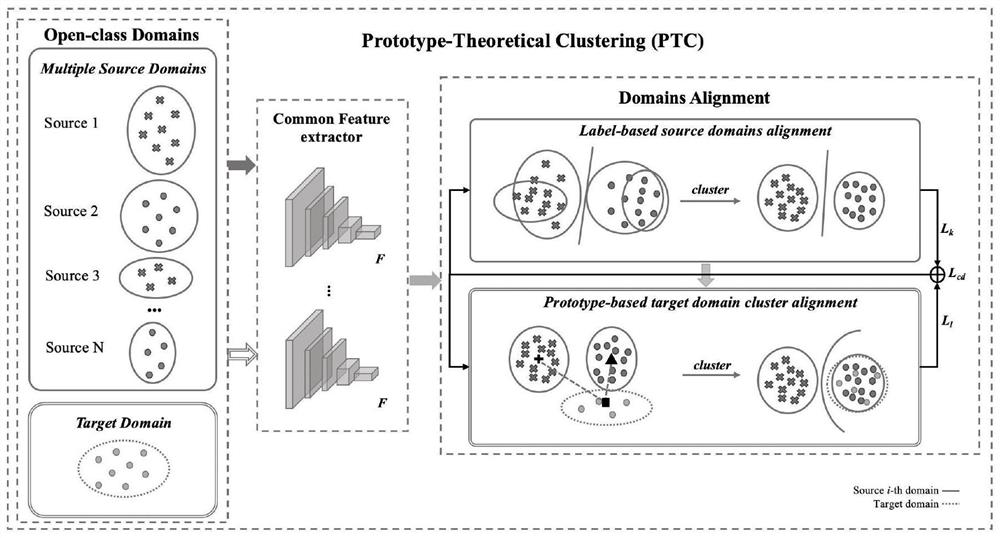Cross-subject EEG cognitive state recognition method based on prototype clustering domain adaptation algorithm
A state recognition and prototype technology, applied in the field of multi-source domain adaptation model construction, can solve problems such as category imbalance and mismatch of EEG data quantity, improve time efficiency, solve individual differences, and reduce model complexity. Effect
- Summary
- Abstract
- Description
- Claims
- Application Information
AI Technical Summary
Problems solved by technology
Method used
Image
Examples
Embodiment Construction
[0035]The present invention will be further described below with reference to the accompanying drawings and examples.
[0036]Such asfigure 1As shown, it is a structural diagram of a prototype based cluster algorithm for unbalanced multi-source domain category imbalances, including the following steps:
[0037]Step 1: Data processing
[0038]Taking online addiction EEG data as an example, the original EEG data processing steps are as follows:
[0039]1-1. Paten removal: For the acquisition of the original EEG data to remove the operation, first carry out 0.1-30 Hz band-pass filtering, and remove the power frequency interference and DC components in the signal; after the ICA independent component analysis Remove the fake in the signal;
[0040]1-2. Noise reduction processing: By wavelet threshold noise reduction and extraction, the signal and noise exhibit different features based on wavelet decomposition, and the filter-like signal is subjected to a multi-scale analysis, the wavelet coefficient of...
PUM
 Login to View More
Login to View More Abstract
Description
Claims
Application Information
 Login to View More
Login to View More - Generate Ideas
- Intellectual Property
- Life Sciences
- Materials
- Tech Scout
- Unparalleled Data Quality
- Higher Quality Content
- 60% Fewer Hallucinations
Browse by: Latest US Patents, China's latest patents, Technical Efficacy Thesaurus, Application Domain, Technology Topic, Popular Technical Reports.
© 2025 PatSnap. All rights reserved.Legal|Privacy policy|Modern Slavery Act Transparency Statement|Sitemap|About US| Contact US: help@patsnap.com



